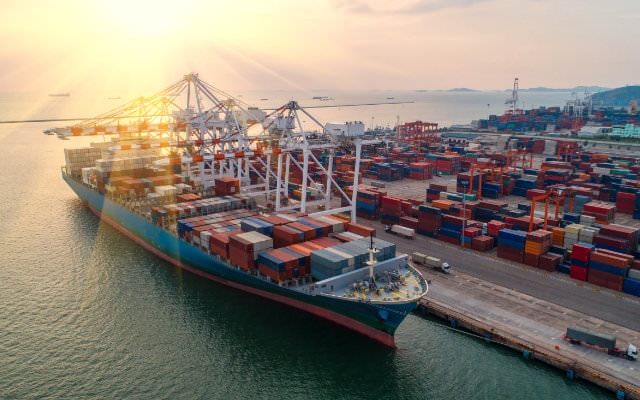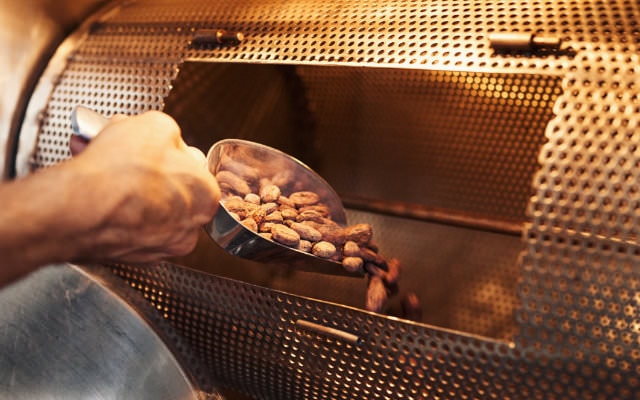Harvesting and preparation
In manual cocoa harvesting, it’s crucial to exercise good judgement in assessing the degree of ripeness of the fruit, and to take special care when cutting it off the tree. If the cocoa fruits are separated too close to the tree, the fruit’s roots can be damaged. Then no new flowers can appear.

The harvested fruit is opened and the cocoa beans removed. This is followed by a fermentation process lasting several days and subsequent drying of the beans. A controlled process is crucial for the formation of flavouring substances, as is the available transport and processing capability for the raw material.
Transport & arrival in port
For shipment, the cocoa beans are filled into jute sacks or loaded loose into containers. During unloading at the port of destination, the warehouse keeper responsible for quality controls checks the delivery.

The goods in bags are inspected in the container for external damage and possible contact with moisture. In addition to the sensory evaluation using an odour test, a “cut test” is also standard: for this purpose, some cocoa beans are halved and examined to check bean size and determine any possible defects.
Processing
The loose cocoa powder is finally transported to a factory that produces different varieties of cocoa for J.J. Darboven. Various products are made from the cocoa powder and other ingredients. They undergo various quality tests with regard to appearance, smell, taste and composition.

Cocoa samples are analysed both by our own laboratory and by an independent testing laboratory. If the analytical values comply with J.J. Darboven’s quality criteria, and if the declaration also complies with EU regulations, the packaged product is released for delivery.